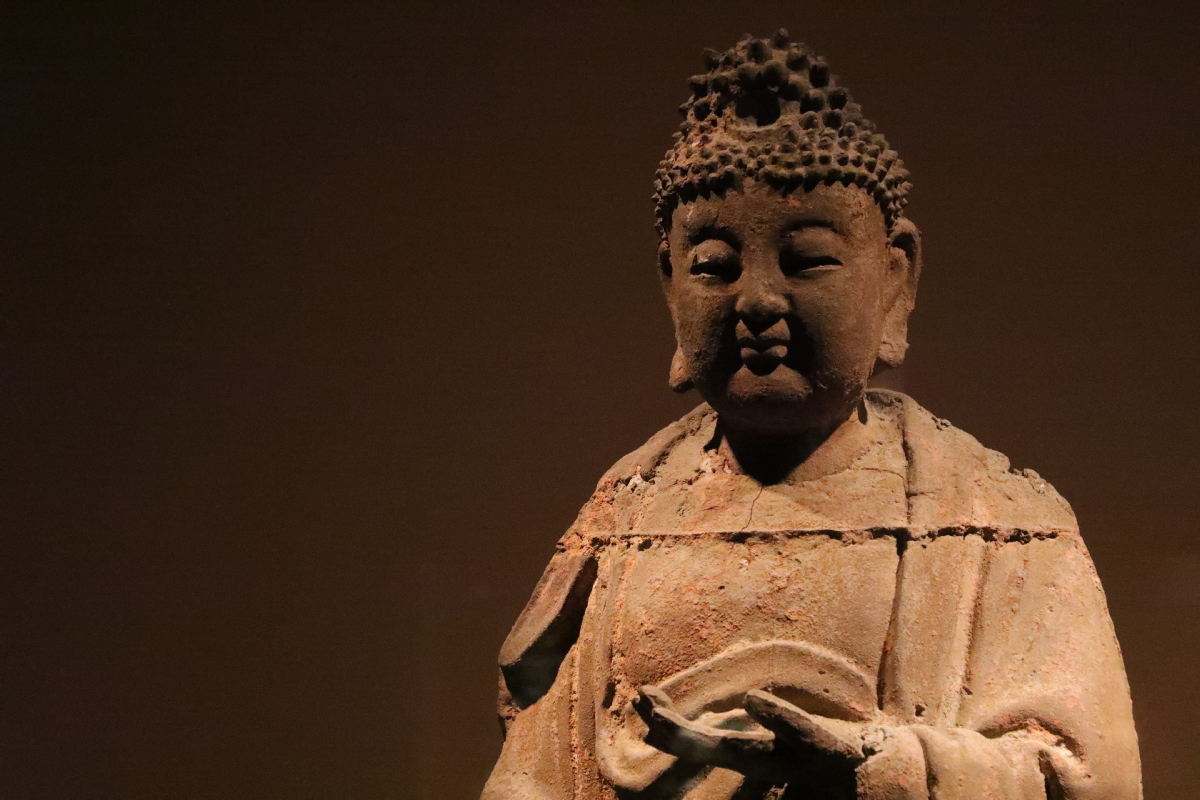 |
|
Other highlights of the show include an iron sculpture from the Ming Dynasty (1368-1644). [Photo by Lin Qi/China Daily] |
As Buddhism spread across ancient China, Buddhist art incorporated indigenous aesthetics and regional beliefs to form a distinct style, reflecting the country's cultural landscape.
Tong says her team categorized Chinese art figures by materials, which present ancient artisans' creativity, varying over different periods.
Clay figures dated around the fourth century and the Tang Dynasty (618-907) show craftspeople beginning to blend Chinese physical features into their works, using clay as a more accessible material.
Stone sculptures gradually gained predominance during the same period, as large Buddhist grottoes were constructed in Shanxi, Gansu, Henan and Jiangsu provinces, and several cities like Qingzhou in Shandong province became centers of Buddhism.
Located in the middle of the exhibition space is a 2-meter-high, colored wooden sculpture from the Song Dynasty (960-1279), depicting Guanyin, the Chinese version of Avalokitesvara bodhisattva.